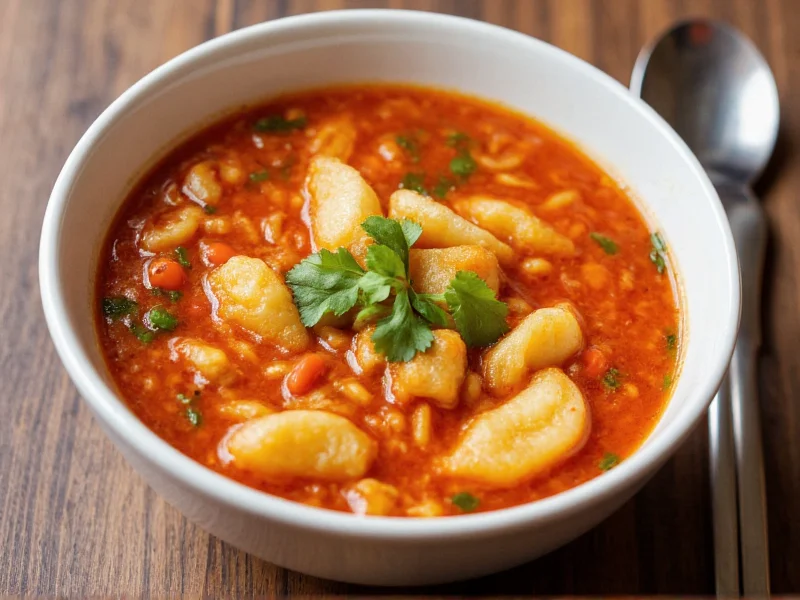When considering how to make Maruchan soup properly, many consumers overlook the importance of using freshly boiled water rather than merely hot tap water. The boiling process ensures complete noodle separation and proper flavor dissolution while eliminating potential safety concerns. Maruchan's instant noodle soups have become pantry staples worldwide due to their convenience, affordability, and shelf stability.
Understanding Maruchan's Product Range
Maruchan offers several product lines that cater to different preferences and dietary needs. The classic Maruchan Instant Lunch remains the most recognized product, featuring pre-cooked noodles with seasoning packets. The brand has expanded to include Maruchan Tonkotsu Ramen, which features richer broth and additional toppings, and Maruchan Offerings, designed with more premium ingredients.
For those exploring is Maruchan soup healthy considerations, it's important to note that while convenient, traditional Maruchan products contain moderate sodium levels and should be consumed as part of a balanced diet. The brand has introduced lower-sodium options for health-conscious consumers seeking healthier instant noodle alternatives.
Nutritional Profile Analysis
Understanding the nutritional content is essential when incorporating Maruchan into your diet. The standard chicken flavor provides basic sustenance but requires augmentation for balanced nutrition. Here's a comparison of key nutritional elements:
| Nutrient | Per Serving (57g) | % Daily Value |
|---|---|---|
| Calories | 190 | 9% |
| Total Fat | 7g | 9% |
| Sodium | 850mg | 37% |
| Total Carbohydrates | 27g | 10% |
| Protein | 5g | 10% |
Optimal Preparation Techniques
Many consumers wonder about the best way to prepare Maruchan for superior taste and texture. Professional chefs recommend:
- Use freshly boiled water (2 cups) rather than hot tap water
- Let noodles sit covered for exactly 3 minutes
- Stir thoroughly before consumption
- Consider adding fresh ingredients like green onions or a soft-boiled egg
For those exploring how to make Maruchan better, culinary experts suggest incorporating fresh vegetables, protein sources, or even a splash of soy sauce to elevate the basic preparation. These enhancements transform the simple instant meal into a more satisfying and nutritionally balanced option.
Practical Usage Considerations
When evaluating Maruchan soup nutrition facts versus similar products, it's important to recognize that instant noodles serve as convenient emergency meals rather than complete nutritional solutions. Registered dietitians recommend pairing Maruchan with additional protein and vegetables to create a more balanced meal.
Storage considerations matter for how long Maruchan lasts in your pantry. Properly stored in a cool, dry place, unopened Maruchan products maintain quality for 8-12 months beyond the printed date. Once prepared, leftovers should be refrigerated and consumed within 24 hours.
Consumer Considerations
For individuals with specific dietary requirements, understanding does Maruchan have gluten is crucial. Most standard Maruchan varieties contain wheat-based noodles, making them unsuitable for gluten-free diets. However, the brand offers select rice-based options for those with gluten sensitivities.
When comparing Maruchan vs Nissin or other instant noodle brands, consumers should consider flavor variety, sodium content, and personal taste preferences. Each brand has distinct characteristics in noodle texture and broth formulation that appeal to different palates.
Frequently Asked Questions
Can you make Maruchan with just hot water?
While Maruchan can be prepared with hot tap water, using freshly boiled water produces significantly better results. Boiling water ensures proper noodle separation, complete flavor dissolution, and eliminates potential safety concerns. The package instructions specifically recommend using boiling water for optimal preparation.
Is Maruchan soup considered healthy?
Maruchan provides convenient sustenance but shouldn't be considered a health food. A single serving contains about 37% of the recommended daily sodium intake. Healthier consumption involves adding vegetables and protein sources, using only half the seasoning packet, or choosing the brand's lower-sodium varieties when available.
How can I improve the nutritional value of Maruchan?
Enhance Maruchan's nutrition by adding cooked vegetables like spinach or broccoli, protein sources such as eggs or tofu, and fresh herbs. Using only half the seasoning packet reduces sodium content while adding a splash of rice vinegar or sesame oil can improve flavor without excess salt. These additions transform the basic instant meal into a more balanced option.
Does Maruchan contain MSG?
Maruchan products do contain monosodium glutamate (MSG) as part of their flavoring system. The ingredient list typically includes 'flavoring' which encompasses MSG along with other seasonings. Individuals sensitive to MSG should review the specific product's ingredient list before consumption.
Are there gluten-free Maruchan options available?
Most standard Maruchan varieties contain wheat-based noodles and are not gluten-free. However, Maruchan offers select rice-based products like their 'Offerings' line which may be suitable for gluten-sensitive individuals. Always check the specific product packaging for gluten-free certification as formulations can vary by flavor and region.











 浙公网安备
33010002000092号
浙公网安备
33010002000092号 浙B2-20120091-4
浙B2-20120091-4